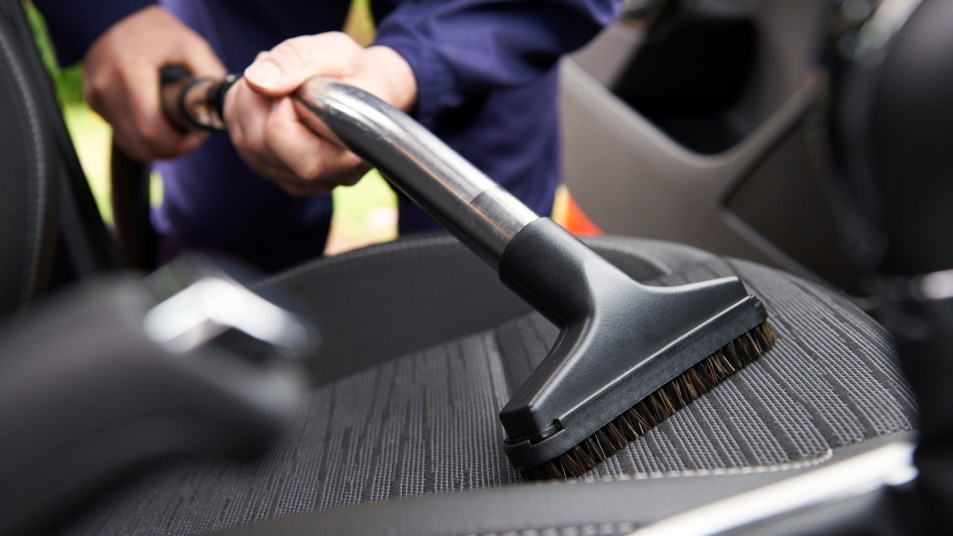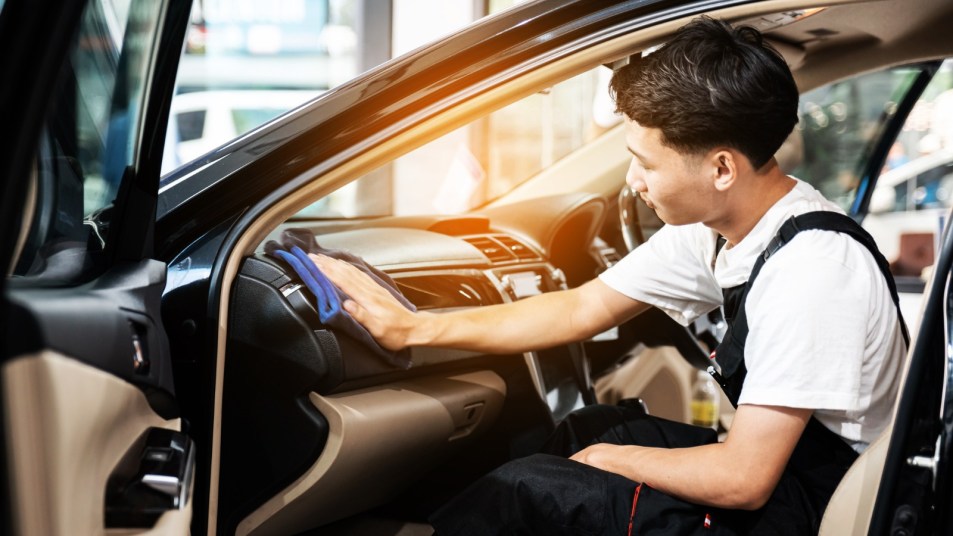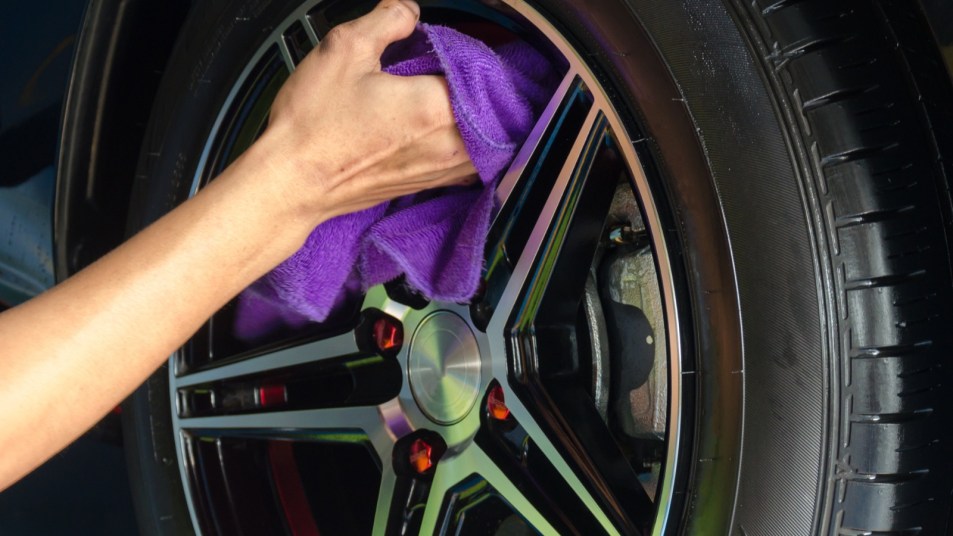Quick Facts About Cleaning a Car Before Selling
- Detailing your car before trading it in or selling it privately can improve its condition, and it has the potential to double your investment with a higher value.
- A professional cleaning may remove stains and odors from the car’s interior, making it more attractive to buyers — and a dealership’s evaluation staff.
- Thoroughly cleaning the engine bay may ease any doubts a buyer or dealer might have about the vehicle’s mechanical condition.
There is no doubt you should clean your car before selling it privately or trading it at a dealership. An old saying proclaims that “a clean car rides better,” but its condition also helps it sell faster and at a higher price.
Used-car sellers can expect upwards of a 200% return on investment by cleaning their car before trading or selling their ride. Read on to see how much a deep cleaning can increase a vehicle’s resale value and learn what goes into comprehensive car detailing.
Better Condition Increases Value
Consider this example to help you understand the benefit of cleaning your car before selling it. Suppose you have a 2019 Subaru Outback 2.5i Limited Wagon. Improving its condition from ‘good’ to ‘very good’ increases its average trade-in value by $703.
2019 Outback Average Price Increase by Vehicle Condition
| Good | Very Good | Average Price Increase | |
| Trade-In Value | $23,812 | $24,515 | $703 (2.95%) |
| Private Party Value | $25,891 | $26,624 | $733 (2.83%) |
Source: Kelley Blue Book
If that used car is rougher around the edges initially, the price can potentially increase by about $3,000 after a thorough detailing job.
2019 Outback Maximum Price Increase by Vehicle Condition
| Good | Very Good | Max Price Increase | |
| Trade-In Value | $22,705 | $25,616 | $2,911 (12.82%) |
| Private Party Value | $24,666 | $27,841 | $3,175 (12.87%) |
Source: Kelley Blue Book
Pros of Cleaning Your Car Before Selling
The goal of cleaning a car before selling it or trading it for another vehicle is to receive a higher sale price or trade-in value. However, deals sometimes fall through, and a freshly cleaned ride can help ease any frustration if you need to keep the current car.
Presale Car Cleaning Checklist
- Interior Car Cleaning
- Exterior Car Cleaning
- Engine Bay Cleaning
- Headlight Restoration
- Paint Correction
- Car Dealer Reconditioning Fee
Interior Car Cleaning
Face it; nobody wants to buy a car with crusty floor mats or someone else’s grime caked around the center console.
Some car owners believe running a vacuum over the carpet and using a cleaning wipe on the dashboard is sufficient presale prep work. Those are tasks for routine maintenance, but detailing the car’s interior can boost its resale value by hundreds of dollars.
When done correctly, an interior detail can remove stains and odors from a car’s upholstery, crumbs from hard-to-reach crevices, and dust from air vents. When detailers use a steam cleaner and hot water extractor, it allows for a deeper clean. The cleaning system pumps hot water deep into the carpet to release the toughest dirt and stains, then extracts the water to pull it off the fibers. It’s something that most people don’t have at their disposal.
If your vehicle has many stains or foul odors, it may be time to have it professionally detailed. A quality cleaning job gets rid of the things a prospective buyer does not want to see, feel, or smell in the car they purchase.
RELATED: Clean Your Car Interior at Home Like a Pro
Exterior Car Cleaning
It takes more than an automated car wash to return the sparkle and shine of your car’s finish. Detailing the exterior is essential if you intend to get top dollar when selling or trading your vehicle.
You can do external car detailing on your own with the right equipment, supplies, and patience. Find a reputable detail shop if you don’t have the time or space to do the work. The detailing staff can help get your vehicle’s appearance closer to how it looked the day you bought it.
Service tiers may vary. But a complete external detail typically begins with a hand wash from the top down, including the wheels and door jambs. Then, technicians apply iron-and-tar remover to trouble spots. After that, they may use a clay bar to remove bonded contaminants from the paint. Next, they polish stainless-steel features before applying wax or paint sealant over the entire vehicle.
Remember that paying to improve your car’s finish is an investment. Vehicles in better condition command higher selling prices.
RELATED: How to Clay Bar a Car: Deep Cleaning Paint and Glass
Engine Bay Cleaning
Your car’s polished exterior gives potential buyers an excellent first impression, and the spotless interior shows them you care about its condition. When they lift the hood, they should see a clean engine bay and reinforce their idea that the vehicle is well-maintained.
Splatters and residue from engine fluids can indicate past problems or existing issues. Make an effort to clean the engine compartment and help prevent any doubts a buyer or dealer’s mechanic might have.
Use an all-purpose cleaner or steam-clean the engine bay. Then apply plastic and rubber protectant. This additional effort is worth it because a clean engine indicates that the care you’ve given to your car isn’t merely cosmetic.
RELATED: Engine Bay Steam Cleaning
Headlight Restoration
Headlight lenses can become clouded, yellow, and pitted over time. These foggy headlights decrease nighttime visibility, which creates a safety issue. If your vehicle needs it, you can use an inexpensive restoration kit to correct hazy and sun-damaged headlights.
Some newer cars have headlights that cost hundreds of dollars or more to replace, so be sure to follow the manufacturer’s instructions included in the kit. In general, the headlight restoration process involves a few steps.
- First, lightly wet-sand the covers to remove oxidation.
- Next, apply a compound that eliminates any marks from sanding.
- Then, polish the headlights to restore clarity before applying a UV protective coating.
RELATED: How to Clean and Restore Headlights
Paint Correction
While not necessary for every car, paint correction can significantly improve a vehicle’s condition by removing swirl marks and light scratches that dull the paint’s gloss and reflections. Vehicles with darker colors see the most significant benefit because their paint defects are more visible in direct lighting.
A major paint correction is a labor-intensive job that may take 10 hours or longer at a detail shop. The process involves multiple steps, including compounding, buffing, polishing, and sealing a car’s paint to restore its original gloss.
RELATED: Car Paint Correction Guide
Car Dealer Reconditioning Fee
Car dealers often deep clean or detail used cars before selling them on their lot. Their efforts cost money, and some dealers disclose additional reconditioning fees ranging from several hundred dollars to a few thousand dollars in some cases. However, this is one of the common dealer fees you don’t need to pay. The used car’s price should reflect the expense of preparing the vehicle for sale.
Why does a used car reconditioning fee matter to the person trading the vehicle to the dealership? If the car is already in excellent condition and freshly detailed, the prospective buyer, in this case, a dealership, will have less bargaining power to negotiate a lower sale price. The seller will get top dollar.
Read Related Articles:
- Exterior Car Detailing: 14 Steps to Clean Your Car Like a Pro
- How Long Does It Take to Detail a Car?
- Ceramic Coatings: Everything You Need to Know
Editor’s Note: This article has been updated since it was initially published.















Greetings Mr. Hardesty,
I want to compliment you on your very well organized, incredibly informative, reader engaging, question answering articles!
You have answered many questions I didn’t even know I had. Your perspectives share sound logical guidance and I feel more confident moving forward.
Thank you!